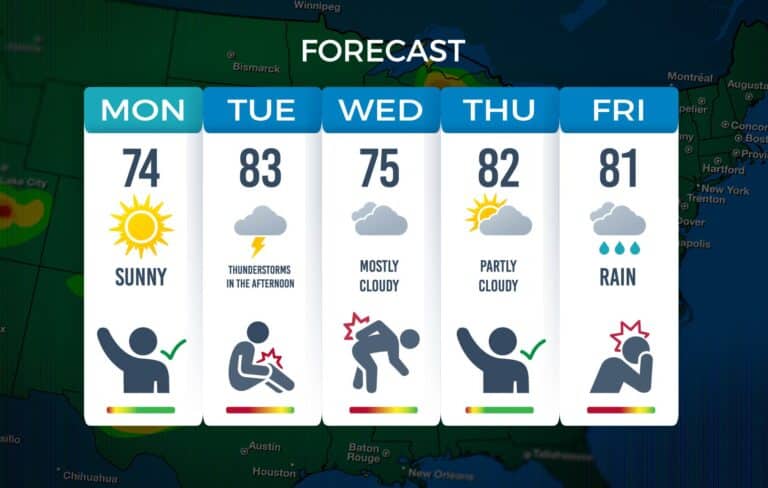“We’re finding more consistent relationships between weather patterns and pain, so it seems more possible to make weather-based pain forecasts,” said lead author and geography/atmospheric sciences lecturer Christopher Elcik. “This study was to survey and see what the audience was for this type of forecast.”
For this study, over 4,600 individuals were surveyed, and among those with migraines 89% identified weather as being something that impacts their pain levels, and 79% said that they believed that weather was a trigger for their pain. Among those with other health conditions, 64% reported that weather patterns could trigger pain, and 94% identified weather as a factor that impacts pain.
“I see how much people can be affected by these types of pain, so if I can provide someone with insight into the level of risk for a day, maybe people can take steps to prevent the pain from happening,” Elcik said. “There are preventative measures people can take if risks are higher.”
If the hypothetical/perceived risk was high over half of the participants said they were likely to take preventive measures like resting, taking medication, or avoiding compounding triggers. 47% of the participants with migraines and 46% of those with pain-related conditions said that they were extremely likely to take these measures.
72% of those with migraines and 66% of those with pain-related conditions reported that they would alter their behavior, which included canceling plans or taking preventive measures in response to a weather-based pain forecast. Some of the participants reported using web-based tools that predict low to high-risk levels according to atmospheric conditions. However, there is little information available about how these tools consider variables or how the predictions are made.
For those with plans, the likelihood to continue with the plans depended on the length of the activity: 57% of those with migraines and 52% of those with pain-related conditions said that they would be extremely likely to continue with plans that were no longer than 30 minutes despite a moderate risk of pain, and about 43% would continue with a highest risk forecast from both groups. However, when the activity would be longer than three hours the numbers dropped to 23% for moderate risk and 18% for high risk with migraines and 21% or 23% respectively for other pain-related conditions; and as the level of risk increased so did the likelihood to alter plans.
“This was across the board. “Everyone was more likely to cancel plans if the forecast risk was higher,” Elcik said. “This publication shows there’s an audience that’s willing and eager to try something new, and there are probably many more people who would benefit—more than we even thought,” he said. “I think these results can push other researchers to also look at similar, larger-scale weather phenomena and help the community better understand how the atmosphere does impact pain.”




